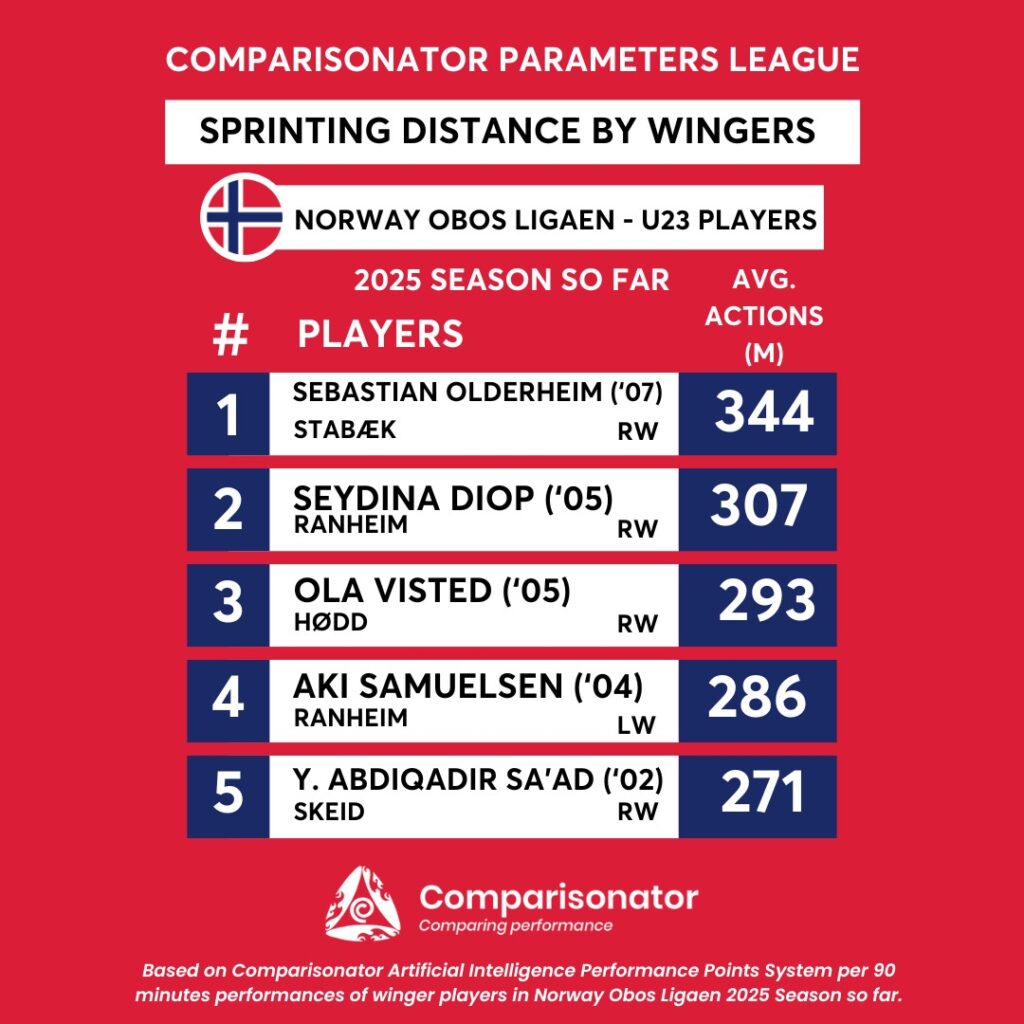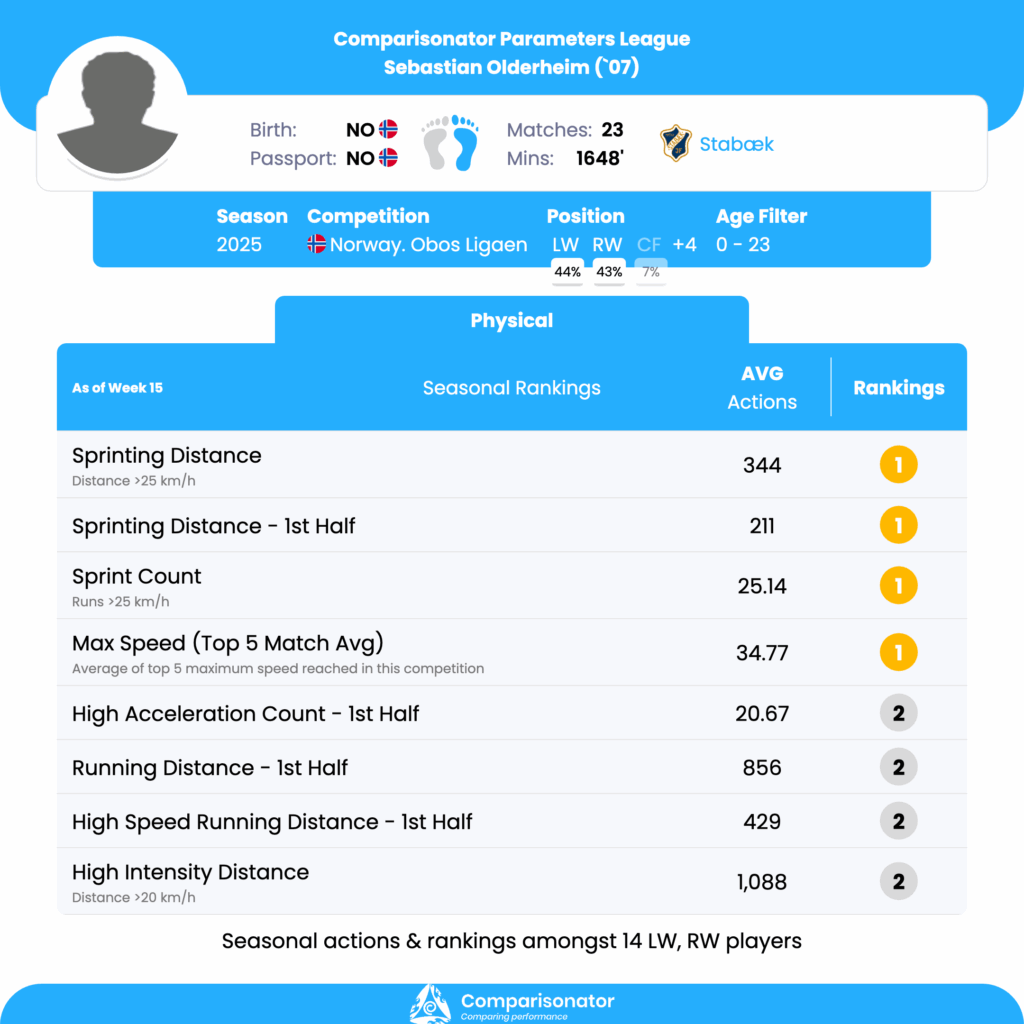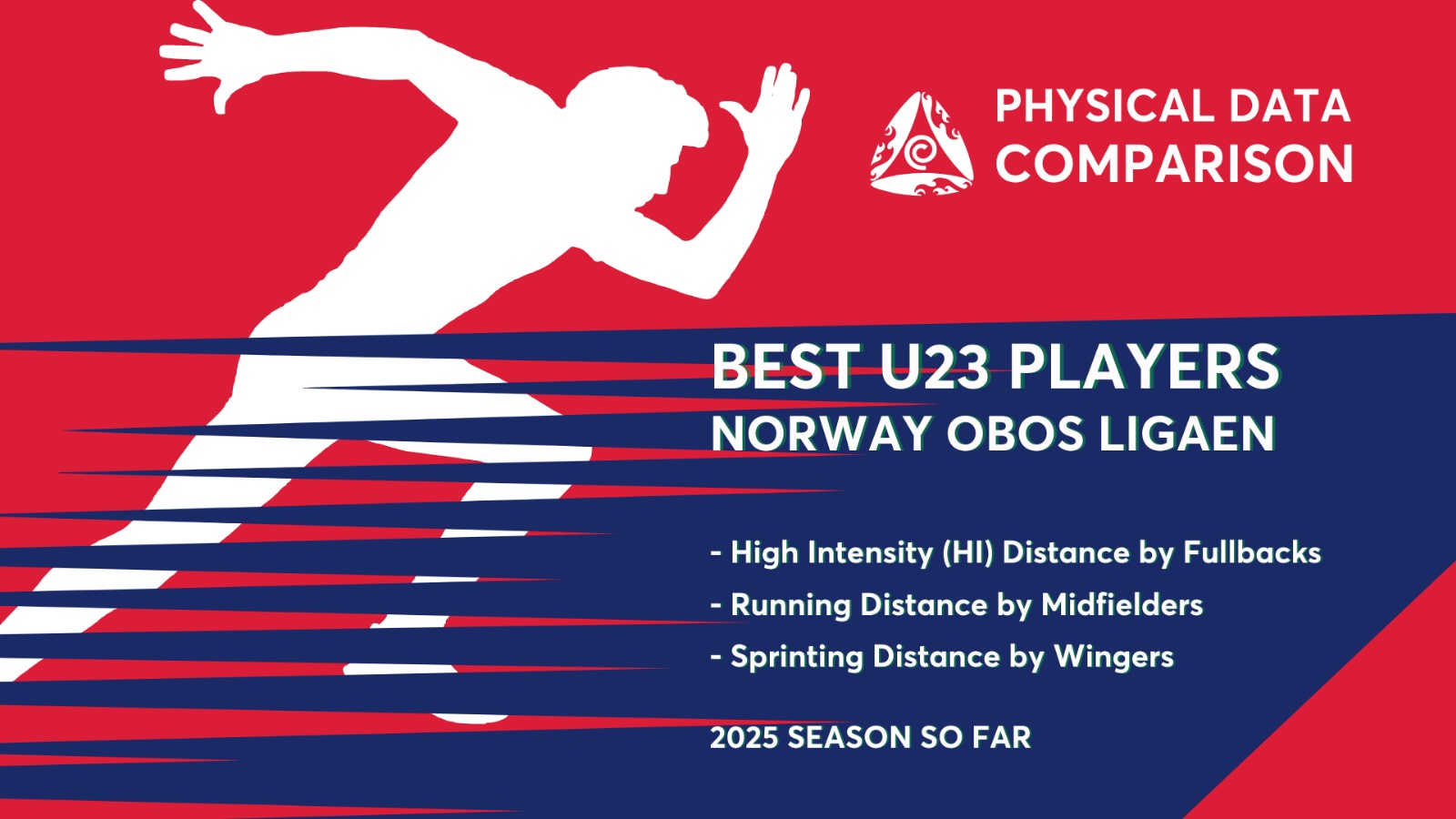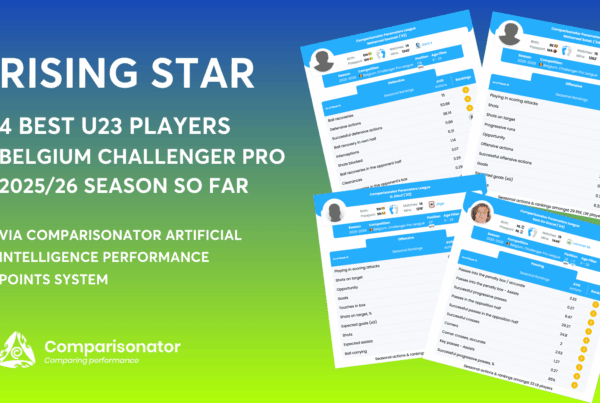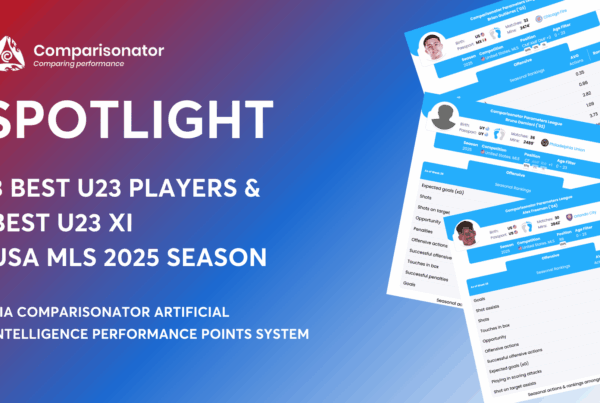As the demands of modern football continue to rise, physical intensity has become a defining factor in identifying top-level talent. Leveraging the advanced capabilities of the Comparisonator Physical Data Comparison Module, we’ve analyzed Norway Obos Ligaen league to spotlight the top-performing U23 players in three key physical metrics during the 2025 season so far. This comprehensive assessment offers clubs, scouts, and analysts valuable insight into emerging players whose physical performance sets them apart.
These findings underscore the increasing significance of physical data in contemporary scouting and recruitment. Extracted from broadcast footage using AI-driven analysis, the metrics provide clubs with accurate, contextualized benchmarks for evaluating talent.
In the High Intensity (HI) Distance category—tracking distance covered at speeds over 20 km/h— Ousmane Diallo Toure emerges as the leader, demonstrating sustained pace in high-intensity match scenarios. Filip Jørgensen leads in Running Distance, highlighting his exceptional endurance and relentless work rate across full matches. Meanwhile, Sebastian Olderheim tops the charts in Sprinting Distance, showcasing frequent bursts at speeds exceeding over 25 km/h, a testament to his explosiveness and mobility.
These standout performances not only spotlight Norway’s next generation of talent but also illustrate how physical analytics can drive smarter, more informed football decisions—from unearthing hidden gems to building dynamic, high-performing squads. Stay tuned as we continue to reveal more data-driven insights throughout the season.
Please note that all numbers are per 90 min data from the 2025 Season So Far.
Ousmane Diallo Toure’s CompaGPT Physicals report:
Ousmane Diallo Toure leads the category with an average of 35.33 High Acceleration Count per match, ranking 1st among 17 players. This is a standout strength, surpassing the next closest competitor, Martin Hellan, who averages 33.4. This indicates Toure’s exceptional ability to frequently accelerate, a crucial skill for defensive and offensive transitions. Tactically, this makes him a reliable option for quick counter-attacks and defensive recoveries. With a top ranking of 986.38 High Intensity Distance per match, Toure demonstrates sustained high-effort performance, exceeding Aleksander Andresen’s 965.36. This showcases his endurance and ability to maintain performance levels throughout the match, crucial for roles demanding continuous engagement and effort across the field.
Ousmane Diallo Toure exhibits remarkable strengths in acceleration, deceleration, sprinting, and high-intensity efforts, ranking as a leader in these categories. These attributes indicate his proficiency in dynamic and transitional roles, making him a valuable asset for tactical setups requiring quick adaptability and consistent high-energy performance. However, his lower rankings in running and total distance suggest potential for growth in endurance and overall field coverage, which could enhance his comprehensive impact in matches.
Ousmane Diallo Toure (’03) (LB) – Skeid
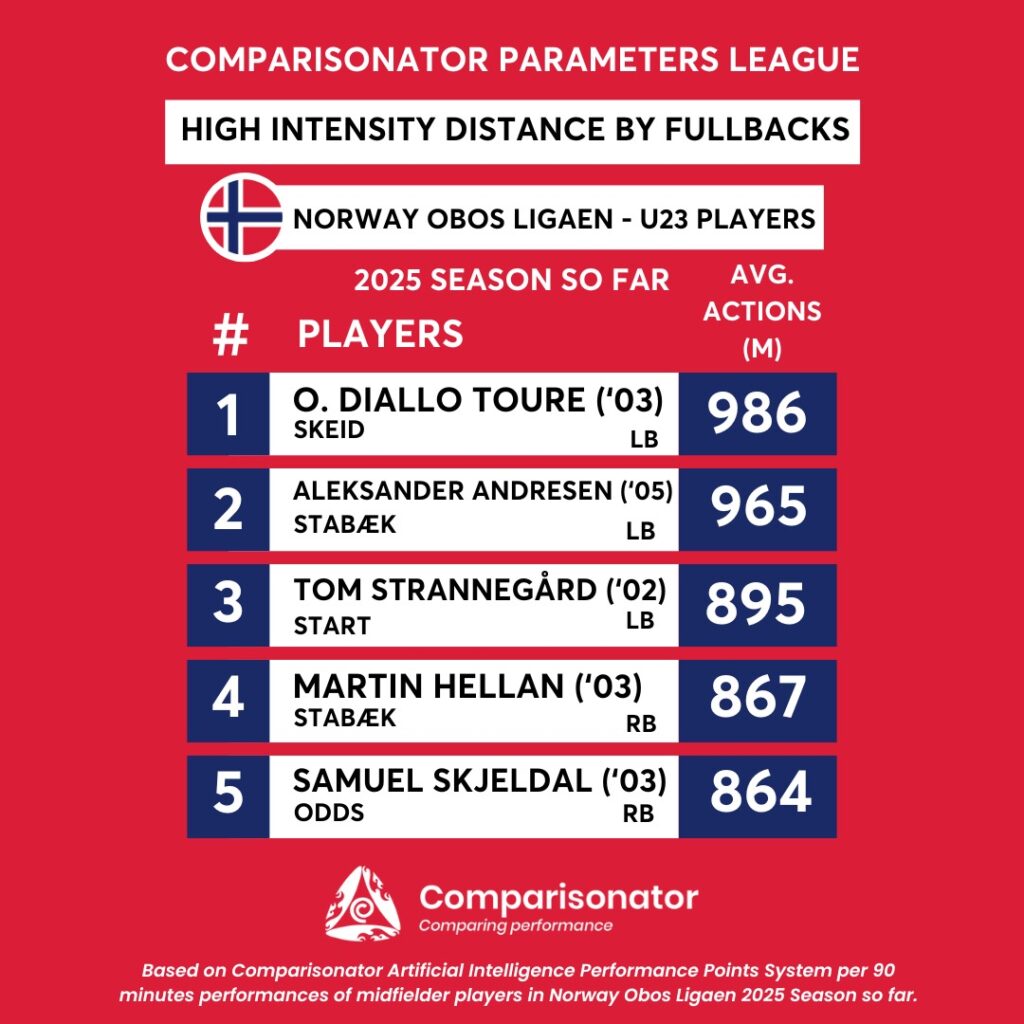
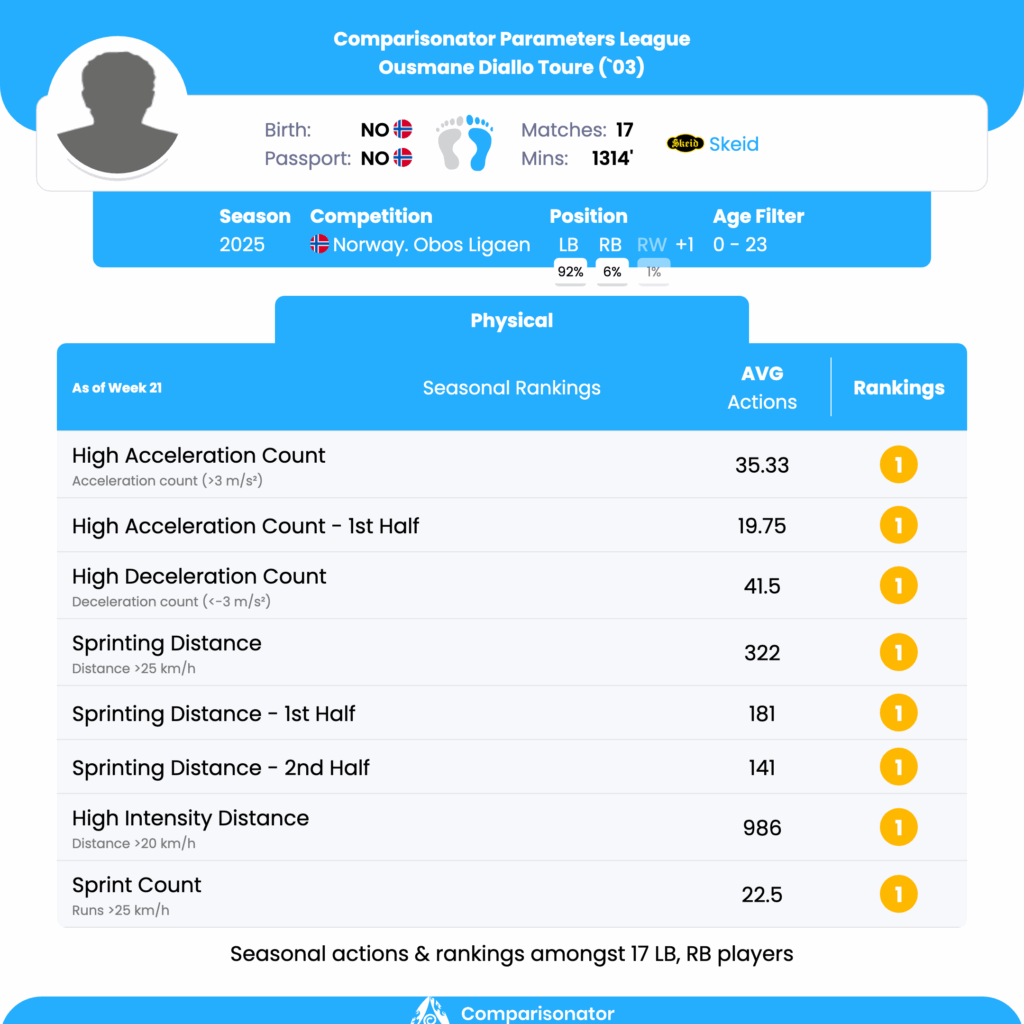
High Intensity (HI) Distance
Filip Jørgensen’s CompaGPT Physicals report:
Filip Jørgensen excels in running distance, leading the rankings with an impressive average of 2242.51 meters per match, surpassing Kasper Sætherbø’s 1905.55 meters. This dominance in running distance, both in the first half (1151.29 meters) and second half (1091.22 meters), indicates exceptional stamina and work rate. His ability to cover significant ground can be strategically utilized in high-pressure games where maintaining midfield control is crucial. Filip’s leading average of 54 high-speed runs per match, compared to Lukass Vapne’s 53.44, highlights his ability to consistently engage in quick bursts of speed, essential for rapid transitions and pressing opponents.
Filip Jørgensen’s strengths lie in his exceptional running distance and high-speed capabilities, particularly in sustaining performance throughout the match. These attributes make him a valuable asset in maintaining midfield dominance and executing strategic pressing. However, there are notable weaknesses in his sprinting metrics, suggesting areas for potential improvement to enhance his effectiveness in high-paced match situations. Overall, Filip’s physical prowess can be tactically leveraged to maximize his impact on the field.
Filip Jørgensen (’02) (CMF) – Odds
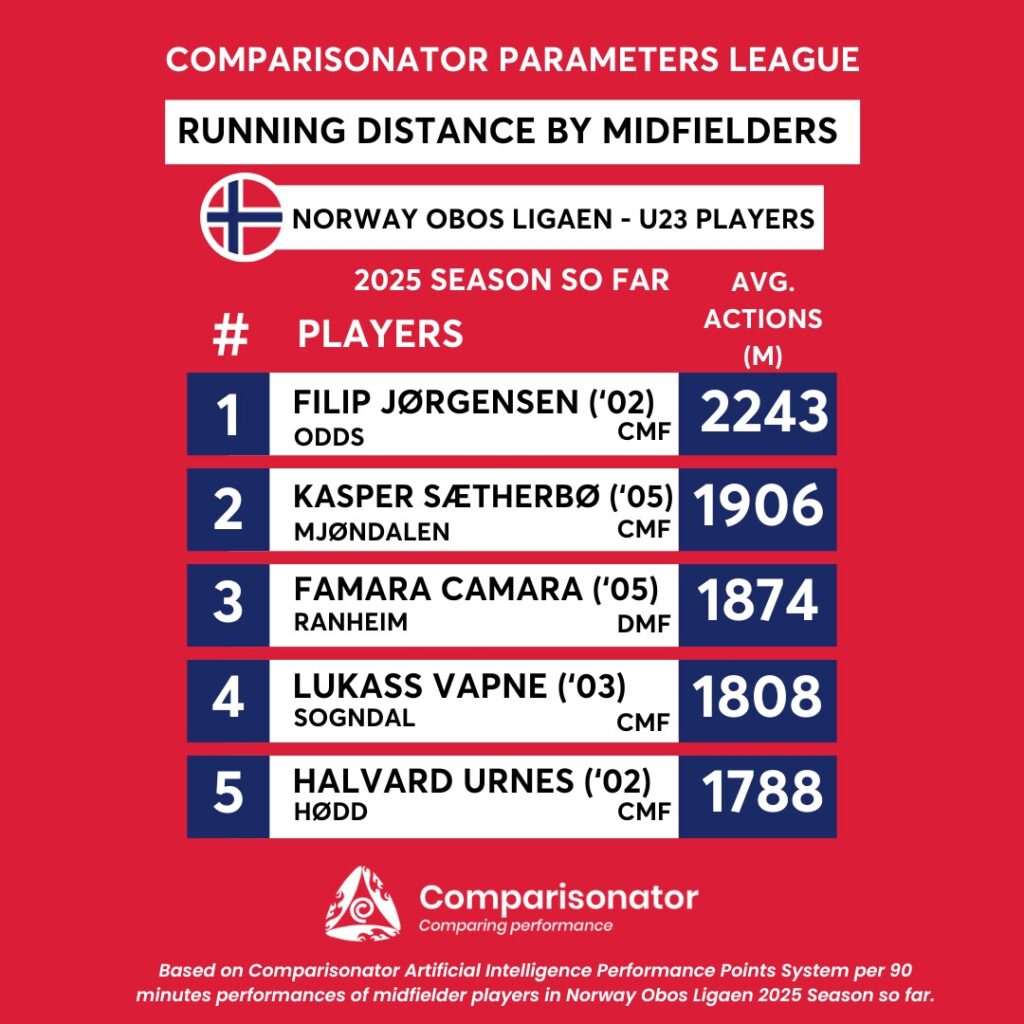
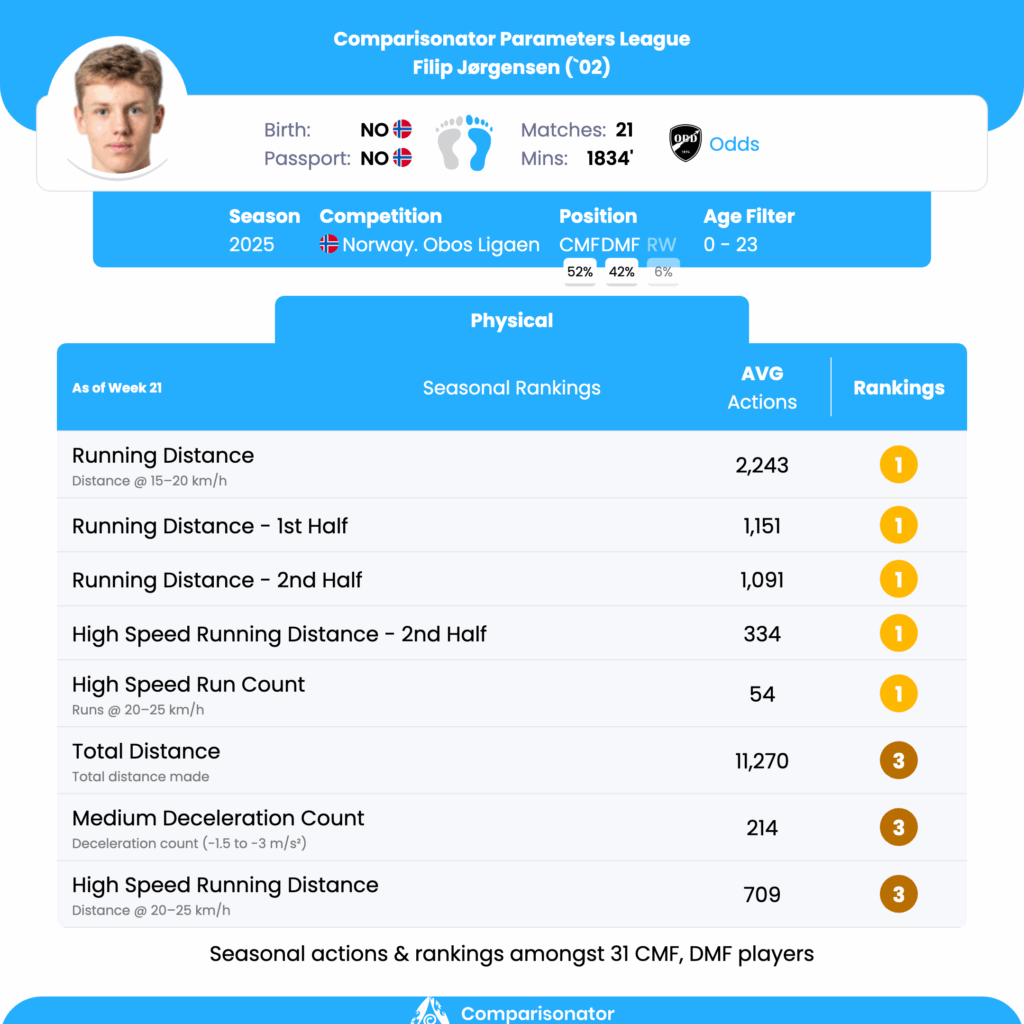
Running Distance
Sebastian Olderheim’s CompaGPT Physicals report:
Sebastian Olderheim leads the league in Sprinting Distance, averaging 344.23 meters per match. This ranks him 1st among 14 players in his position, significantly outperforming the next best player, S. Diop, who averages 306.59 meters. This indicates exceptional stamina and speed, making him a valuable asset for quick transitions and counter-attacks. With an average of 25.14 sprints per match, Olderheim ranks 1st in his position, surpassing Yasir Abdiqadir Sa’Ad at 23.88 sprints. This showcases his relentless effort and work rate, suggesting he might be highly effective in high-pressure situations where continuous movement is crucial.
Sebastian Olderheim’s standout performances are evident in his sprinting distance, sprint count, and max speed, highlighting his strengths in agility and pace. These attributes suggest he can be tactically utilized in roles requiring high-speed transitions and pressing duties. However, his reduced performance in acceleration and distance metrics in the second half could be areas for development, focusing on endurance training and maintaining high intensity throughout matches.
Sebastian Olderheim (’07) (RW) – Stabæk
